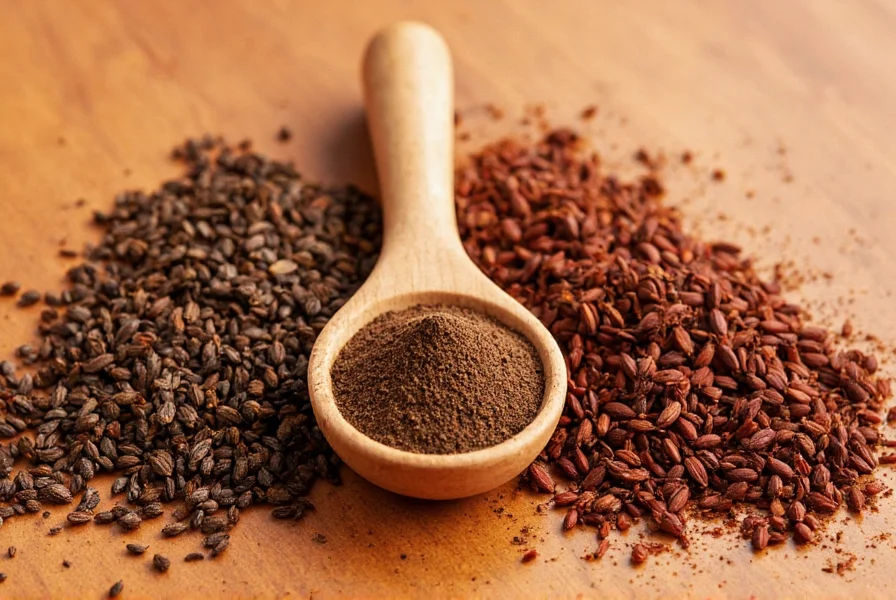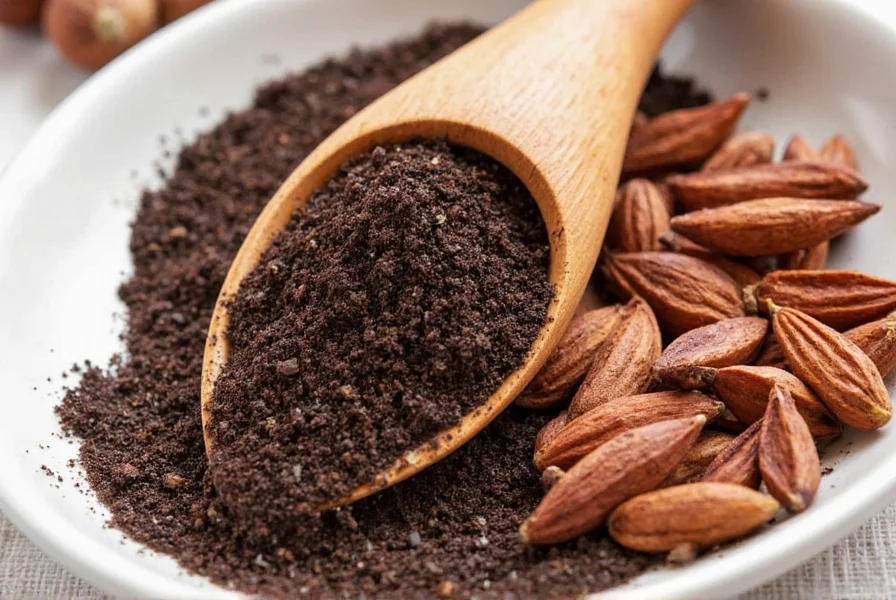Understanding what black spice actually means requires navigating through several culinary traditions where this ambiguous term appears. Many home cooks and food enthusiasts encounter confusion when recipes simply call for “black spice” without specifying which variety they mean. This comprehensive guide clarifies the different interpretations of black spice across global cuisines, their unique flavor profiles, and practical usage tips.
Defining Black Spice: More Than One Interpretation
The term “black spice” creates confusion because it doesn't refer to a single standardized ingredient. Instead, it serves as an umbrella term for several dark-colored spices that play significant roles in different culinary traditions. Identifying which black spice your recipe requires depends largely on the cultural context of the dish you're preparing.
Kala Namak: The Most Common Black Spice
When most culinary professionals refer to black spice, they mean kala namak (literally “black salt” in Hindi), also known as Himalayan black salt or Indian black salt. Despite its name, this isn't technically a spice but a type of volcanic rock salt harvested primarily in Pakistan and northern India.
What makes kala namak distinctive is its sulfur content, which gives it a characteristic eggy aroma. This property makes it invaluable in vegan cooking as an egg substitute. The salt ranges in color from dark pink to deep purple-black, depending on its mineral composition.
| Characteristic | Description |
|---|---|
| Primary Composition | Sodium chloride with sulfur compounds (sodium sulfate, sodium sulfide) |
| Flavor Profile | Sulfurous, mineral-rich, umami with subtle egg-like notes |
| Common Culinary Uses | Chaat masala, vegan egg dishes, fruit salads, raitas |
| Storage Recommendation | Airtight container away from moisture (hygroscopic) |

Other Interpretations of Black Spice
Black Cardamom
In some contexts, particularly in Middle Eastern and South Asian cooking, black spice refers to black cardamom (Amomum subulatum). Unlike the more common green cardamom, black cardamom pods are larger, darker, and have a smoky, camphorous flavor due to being dried over open flames.
Chefs use black cardamom in meat dishes, rice preparations like biryani, and certain spice blends where its intense smokiness can shine without overwhelming other ingredients. It's typically used whole and removed before serving.
Persian Advieh and Middle Eastern Blends
In Persian cuisine, the term advieh refers to spice blends, and certain variations might be called “black spice.” These often include nigella seeds (also called black cumin or kalonji), which are small black seeds with a nutty, oregano-like flavor.
Nigella seeds frequently appear in Middle Eastern and Indian breads, pickles, and vegetable dishes. They're sometimes confused with black sesame seeds or onion seeds, though they have a distinctive flavor profile all their own.

How to Use Black Spice in Your Cooking
Understanding how to use black spice properly makes all the difference in your culinary results. Each variety requires different handling:
- Kala namak: Add at the end of cooking or as a finishing salt to preserve its volatile sulfur compounds. Start with 1/8 teaspoon and adjust to taste.
- Black cardamom: Use whole pods in slow-cooked dishes, removing before serving. Ground black cardamom works in spice rubs but loses potency quickly.
- Nigella seeds: Toast lightly before use to enhance their nutty flavor. Sprinkle on breads, mix into doughs, or use as a tempering spice.
Finding Authentic Black Spice
Locating genuine black spice near me can be challenging depending on your location. Specialty Indian markets typically carry authentic kala namak, while Middle Eastern grocers often stock nigella seeds and high-quality black cardamom.
When purchasing, look for these quality indicators:
- For kala namak: Crystalline structure with pinkish-purple hues (not uniformly black)
- For black cardamom: Whole, intact pods with visible ridges and smoky aroma
- For nigella seeds: Small, matte-black teardrop-shaped seeds (not shiny like sesame)
Black Spice Substitutes When You Can't Find Authentic Versions
If you're searching for what to use instead of black spice, consider these alternatives based on which variety you need:
- Kala namak substitute: Mix 3 parts regular salt with 1 part celery salt and a tiny pinch of asafetida for the sulfur notes
- Black cardamom substitute: Use green cardamom with a few drops of liquid smoke (use sparingly)
- Nigella seeds substitute: Onion seeds or black sesame seeds (though flavor profiles differ)
Remember that substitutes never perfectly replicate authentic black spice varieties, but they can provide reasonable approximations when necessary.
Exploring Black Spice in Traditional Dishes
Understanding black spice in Indian cooking reveals why it's indispensable in certain recipes. Kala namak features prominently in chaat masala, the tangy spice blend used on street food snacks across India. Its sulfur compounds react with fruits like mango and watermelon to create an unexpectedly savory dimension.
In vegan cooking communities, kala namak has gained popularity as black spice for vegan eggs, where just a pinch transforms tofu scrambles into convincing egg alternatives. This application demonstrates how a small amount of the right black spice can dramatically alter flavor profiles.
Final Considerations for Black Spice Enthusiasts
Whether you're exploring what black spice is called in different cultures or seeking to incorporate these unique ingredients into your cooking, remember that context matters. Always consider the culinary tradition of the recipe you're following to determine which black spice variety it likely requires.
Proper storage extends the shelf life of all black spice varieties—keep them in airtight containers away from light and moisture. Whole forms generally maintain freshness longer than pre-ground versions, so consider purchasing whole spices and grinding them as needed for maximum flavor impact.










 浙公网安备
33010002000092号
浙公网安备
33010002000092号 浙B2-20120091-4
浙B2-20120091-4